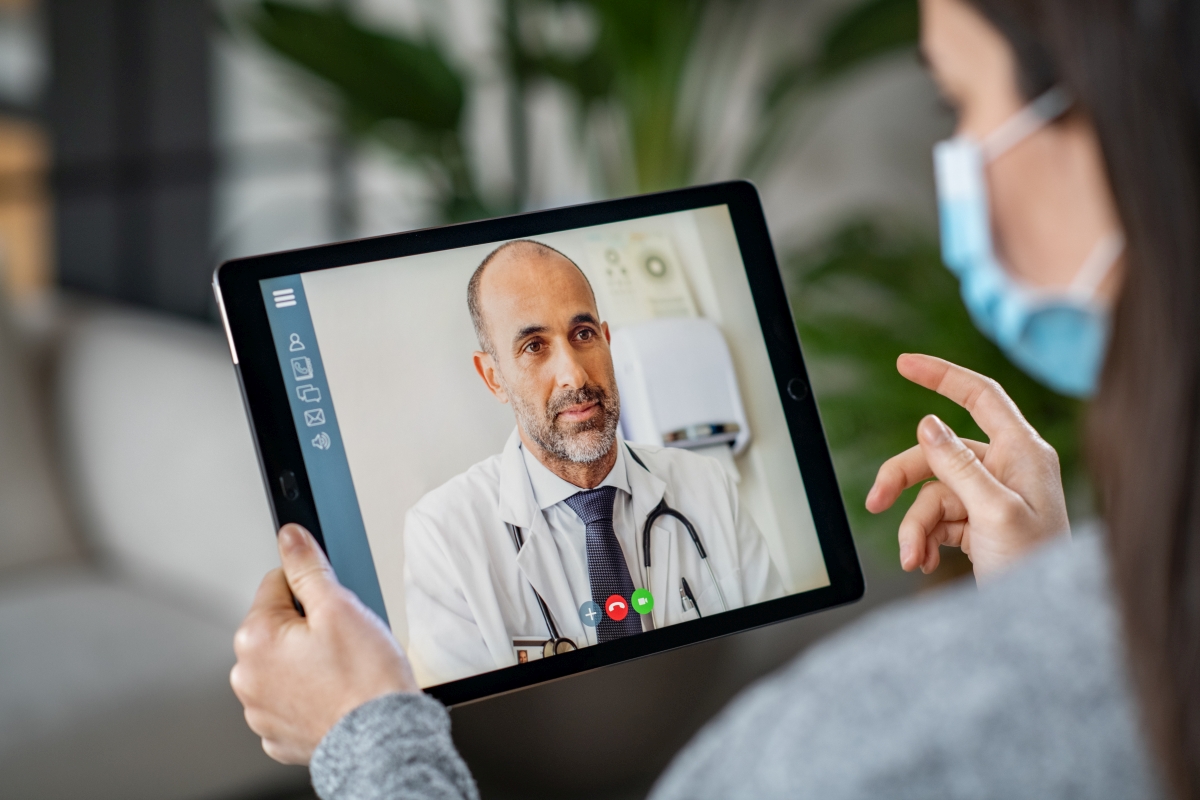Top Factors to Choose Teledoctors for Telemedicine Providers
Top Factors to Choose Teledoctors for Telemedicine Providers
Blog Article
Checking Out the Advantages and Challenges of Teledoctors in Modern Medical Care
As the medical care landscape progresses, teledoctors have arised as an essential element in bridging gaps in medical gain access to and effectiveness. How can the health care industry equilibrium these benefits with the fundamental obstacles?
Expanding Accessibility to Treatment
Telemedicine has actually become a critical development in modern-day health care, considerably increasing access to care for varied populaces. By leveraging electronic innovation, teledoctors have actually transformed the standard healthcare distribution model, making it feasible for individuals in underserved or remote areas to get prompt clinical consultation. This evolution is especially advantageous for people residing in country areas, where the scarcity of health care facilities and experts often results in delayed or insufficient treatment.
Teledoctors contribute in linking the space created by geographical barriers. Through virtual assessments, individuals can access a variety of medical care services without the need for comprehensive travel. This is especially useful for those with flexibility concerns or persistent conditions requiring frequent medical attention. Moreover, telemedicine enhances continuity of care by allowing regular follow-ups and tracking, thus boosting person end results.
The integration of teledoctors into healthcare systems also supports the management of public health situations by helping with rapid action and triage. Throughout pandemics, for instance, digital appointments lower the worry on physical medical care centers, decreasing exposure risks for both people and doctor. As telemedicine remains to advance, it promises to reshape the landscape of medical care availability, making it a lot more comprehensive and reliable.
Cost-Effectiveness of Teledoctors
The cost-effectiveness of teledoctors is a significant factor driving their prevalent adoption in healthcare systems. By lowering the requirement for physical facilities and in-person sees, teledoctors use a more budget friendly choice to standard healthcare distribution. This model permits health care providers to reduced operational prices, such as those connected with maintaining physical offices and employing substantial on-site team. teledoctors. Subsequently, these financial savings can be handed down to people in the form of decreased examination charges, making medical care much more available to a more comprehensive population.
In addition, teledoctors help with a more efficient use of medical care resources by lessening unneeded emergency clinic sees and medical facility admissions. Patients can access timely examinations for minor conditions or follow-up treatment, which aids to relieve the concern on overstretched healthcare centers. This efficiency not only leads to cost financial savings for doctor but likewise lowers the monetary stress on clients that could or else deal with expensive healthcare facility bills.
Furthermore, teledoctors can aid in handling chronic conditions a lot more successfully by offering regular tracking and timely treatments. This positive approach can prevent difficulties, therefore decreasing long-term therapy expenses. Overall, teledoctors offer a practical remedy to the intensifying costs of health care, while maintaining top quality care delivery.
Enhancing Individual Convenience
While cost-effectiveness plays a critical role in the rise of teledoctors, improving person ease stands as one more engaging benefit of this medical care model. With the integration of teledoctors, clients can bypass the generally lengthy process of scheduling and participating in in-person consultations.
Furthermore, teledoctors provide adaptable organizing, enabling patients to organize consultations sometimes that best fit their individual and expert dedications. This versatility is very useful for individuals stabilizing requiring job timetables or family members responsibilities, guaranteeing that health care can be incorporated perfectly into their lives. In addition, the capability to accessibility physician from the comfort of one's home can result in raised individual engagement and adherence to treatment strategies, as the obstacles to looking for care are lowered.
The benefit supplied by teledoctors not just improves the individual experience yet additionally adds to an extra efficient and responsive healthcare delivery system, inevitably sustaining far better wellness results.
Resolving Personal Privacy Worries
Amidst the expanding adoption of teledoctors, privacy issues emerge as a substantial factor to consider. As medical care significantly counts on electronic platforms, guaranteeing the confidentiality of patient info ends up being critical. The digitization of medical documents and the usage of telecommunication innovations necessitate durable security actions to shield delicate data from unapproved accessibility and breaches.
Doctor should follow strict regulations, such as the Medical Insurance Portability and Accountability Act (HIPAA) in the USA, which establishes national criteria for guarding medical details. Compliance with such laws is vital in maintaining person depend on and ensuring their information is managed properly. Encryption of information, protected interaction channels, and normal audits are some of the actions that can be executed to boost data defense.
In spite of these actions, difficulties linger. Cybersecurity risks are evolving, and health care organizations should remain attentive to new vulnerabilities. Additionally, enlightening both clients and medical care carriers regarding best techniques in information personal privacy is important. This consists of comprehending the limitations of data and the value of secure login qualifications. teledoctors.
As teledoctors end up being a lot more indispensable to health care distribution, attending to personal privacy concerns is vital to make certain both the efficacy and credibility of these solutions.

Browsing the Digital Divide
Linking the electronic divide is a vital challenge in the prevalent fostering of teledoctors. teledoctors. This divide encompasses variations in accessibility to electronic technology, especially amongst country, low-income, and elderly populaces. These groups often do not have the essential devices, trustworthy internet connectivity, or electronic literacy needed for reliable participation in telehealth solutions. Subsequently, the advantages of teledoctors-- such as increased access and benefit-- continue to be unreachable for numerous people who can read this most benefit from them.
Initiatives to alleviate this divide require a multi-faceted technique. Policymakers need to focus on facilities advancement to improve net access in underserved areas. Furthermore, efforts to subsidize modern technology for low-income households can play a pivotal duty Home Page in making certain fair gain access to. Healthcare service providers and area organizations need to work together to offer electronic literacy programs, equipping patients to browse telehealth platforms with confidence. Moreover, creating user-friendly user interfaces can further enhance accessibility for all demographics, especially the elderly.

Final Thought
The integration of teledoctors right into modern medical care provides considerable advantages, including raised access to care, cost-effectiveness, and boosted client convenience. Nevertheless, challenges such as personal privacy concerns, the digital divide, and cybersecurity hazards should be resolved to make the most of these benefits. By applying robust data defense steps, boosting digital literacy, and making sure secure technological facilities, the possibility of teledoctors can be fully recognized, advertising fair healthcare shipment and changing the healthcare experience for all individuals.

Report this page